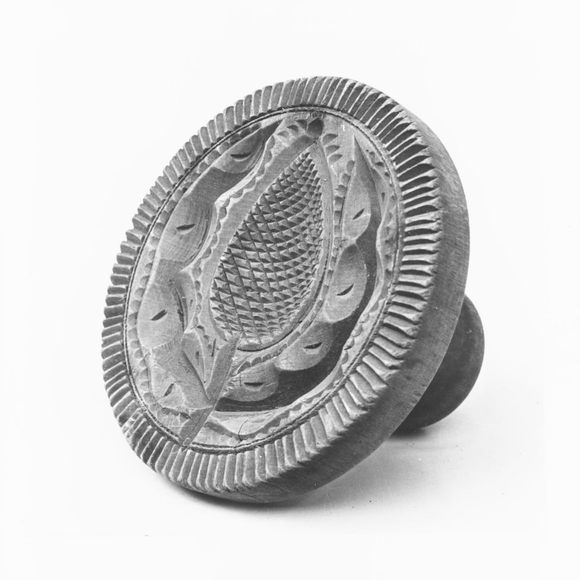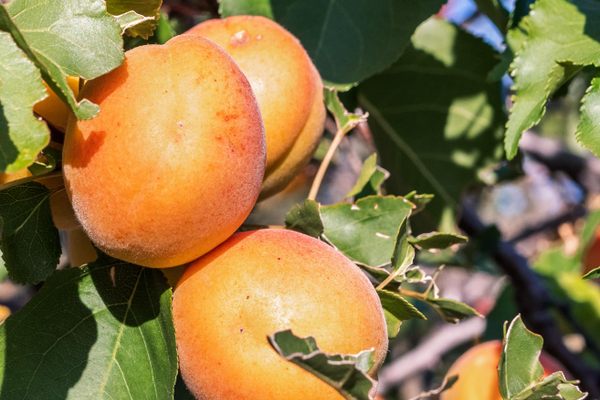Even before artists began carving life-sized cows from enormous blocks of butter, 18th- and 19th-century dairy farmers were expressing their creativity through creamery. Butter molds, usually carved from wood, were a way for farmers to add panache to their product while also offering their customers a way to identify it, especially important as dairy began to be sold at the market and not directly from the farm.
Archaeologists have unearthed molds for shaping foods that date as far back as ancient Babylon. Molding butter for table centerpieces became especially popular during the Renaissance, when butter sculptures graced regal banquet tables, but these tended to be sculpted by hand. Around the 19th century in northern Europe, known for its dairy culture and its cooler climes, farmers used large wooden butter molds, called smørstaup. Around the same time, American dairy farmers also started utilizing carved wooden butter molds for a decorative flair.
Many wooden molds were shaped like bells that were spacious enough to hold a pound of butter. The stamp itself was a carved insert that would occupy the top of the inner space, and was attached attached to a long handle. After the cream was churned and washed (washing butter gets rid of leftover whey and helps butter keep longer), it would be ready for molding. Once packed into the cavity, the butter pressed against the top would take on the impression of the stamp’s etching. The handle could then be used like a plunger to push the stamped butter out, its curved top revealing the carved design.
American butter molds often displayed intricate designs of tulips, farm animals, and wildlife, or, sometimes, the ornate etching of a pineapple. Why pineapples? The pineapple was indigenous to the Americas, and thus a symbol for early settlers of their new home. The fruit, however, was difficult to obtain and expensive to purchase. In turn, pineapples became a perfect representation of status and hospitality, and, similar to the sculpted butter centerpieces of the Renaissance banquets, pineapples represented “a visual apogee of the table display.” In other words, for the perfect dinner party, forget the foie gras and bring on the butter pineapples.
Where to Try It
-
High Plains Museum
1717 Cherry Avenue, Goodland, Kansas, 67735, United StatesThis museum's butter molds feature designs of swans, pineapples, and more.
-
Museum of the Shenandoah Valley
901 Amherst St, Winchester, Virginia, 22601, United StatesCheck in advance to see if the butter mold collection is on display.
Written By
 Leigh ChavezBush
Leigh ChavezBush
Sources
- www.journals.uchicago.edu/doi/10.1086/511405
- digital.lib.msu.edu/projects/cookbooks/html/museum/object_010.cfm
- www.themsv.org/artwork/butter-mold
- statemuseumpa.org/butter-mold/
- highplainsmuseum.org/2013/07/holy-butter-mold-batman/
- www.metmuseum.org/art/collection/search/1052
- www.jstor.org/stable/3628620
- books.google.com/books?id=qy5hAgAAQBAJ&source=gbs_navlinks_s
- books.google.com/books?id=PzKD-z8oRMIC&printsec=frontcover&dq=Corn+Palaces+and+Butter+Queens&hl=en&sa=X&ved=0ahUKEwji_bub-_neAhULU98KHfZ7BZ8Q6AEIKDAA#v=snippet&q=butter%20mold&f=false
- dspace.plu.edu/xmlui/handle/10989/15291


















